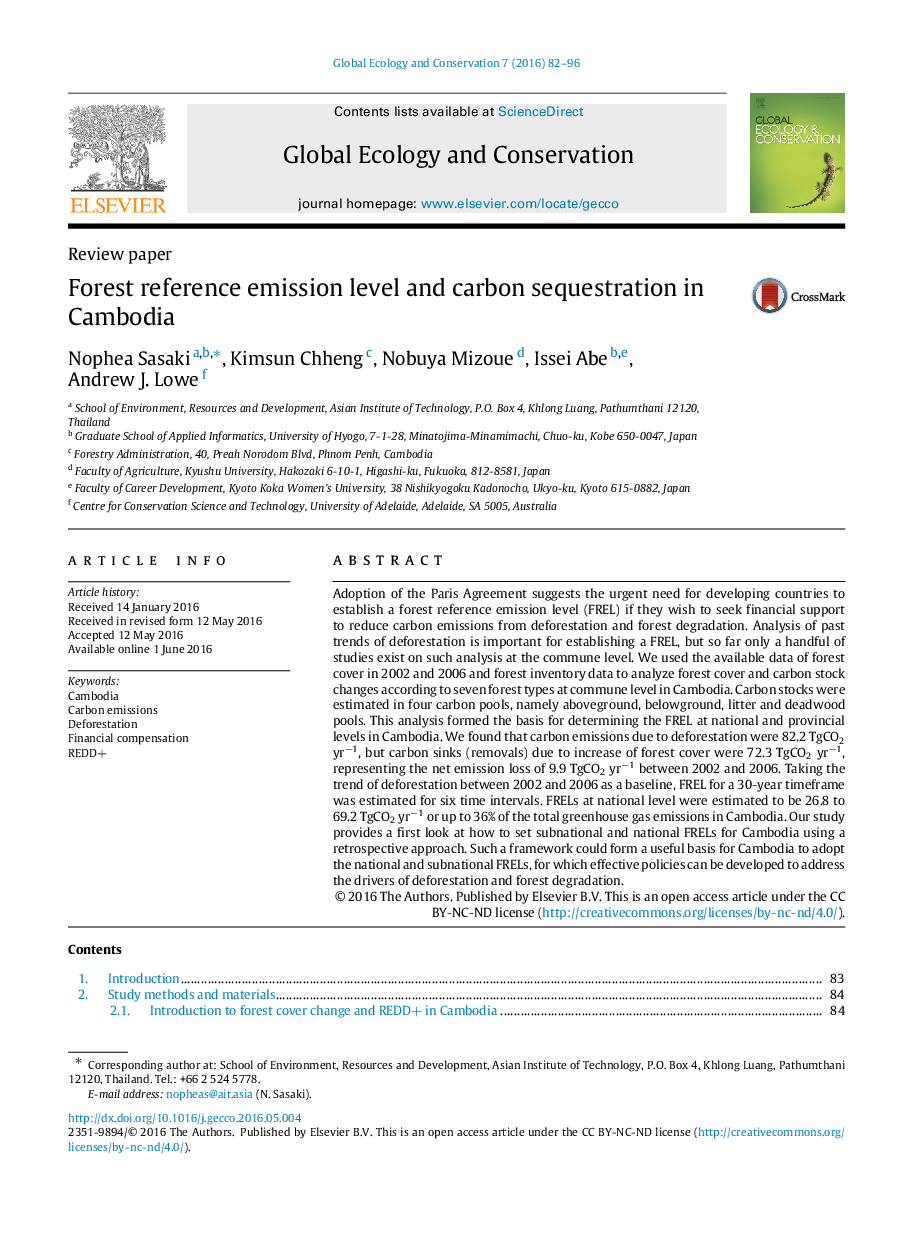| Article ID | Journal | Published Year | Pages | File Type |
|---|---|---|---|---|
| 4379458 | Global Ecology and Conservation | 2016 | 15 Pages |
Adoption of the Paris Agreement suggests the urgent need for developing countries to establish a forest reference emission level (FREL) if they wish to seek financial support to reduce carbon emissions from deforestation and forest degradation. Analysis of past trends of deforestation is important for establishing a FREL, but so far only a handful of studies exist on such analysis at the commune level. We used the available data of forest cover in 2002 and 2006 and forest inventory data to analyze forest cover and carbon stock changes according to seven forest types at commune level in Cambodia. Carbon stocks were estimated in four carbon pools, namely aboveground, belowground, litter and deadwood pools. This analysis formed the basis for determining the FREL at national and provincial levels in Cambodia. We found that carbon emissions due to deforestation were 82.2 TgCO22 yr−1−1, but carbon sinks (removals) due to increase of forest cover were 72.3 TgCO22 yr−1−1, representing the net emission loss of 9.9 TgCO22 yr−1−1 between 2002 and 2006. Taking the trend of deforestation between 2002 and 2006 as a baseline, FREL for a 30-year timeframe was estimated for six time intervals. FRELs at national level were estimated to be 26.8 to 69.2 TgCO22 yr−1−1 or up to 36% of the total greenhouse gas emissions in Cambodia. Our study provides a first look at how to set subnational and national FRELs for Cambodia using a retrospective approach. Such a framework could form a useful basis for Cambodia to adopt the national and subnational FRELs, for which effective policies can be developed to address the drivers of deforestation and forest degradation.
